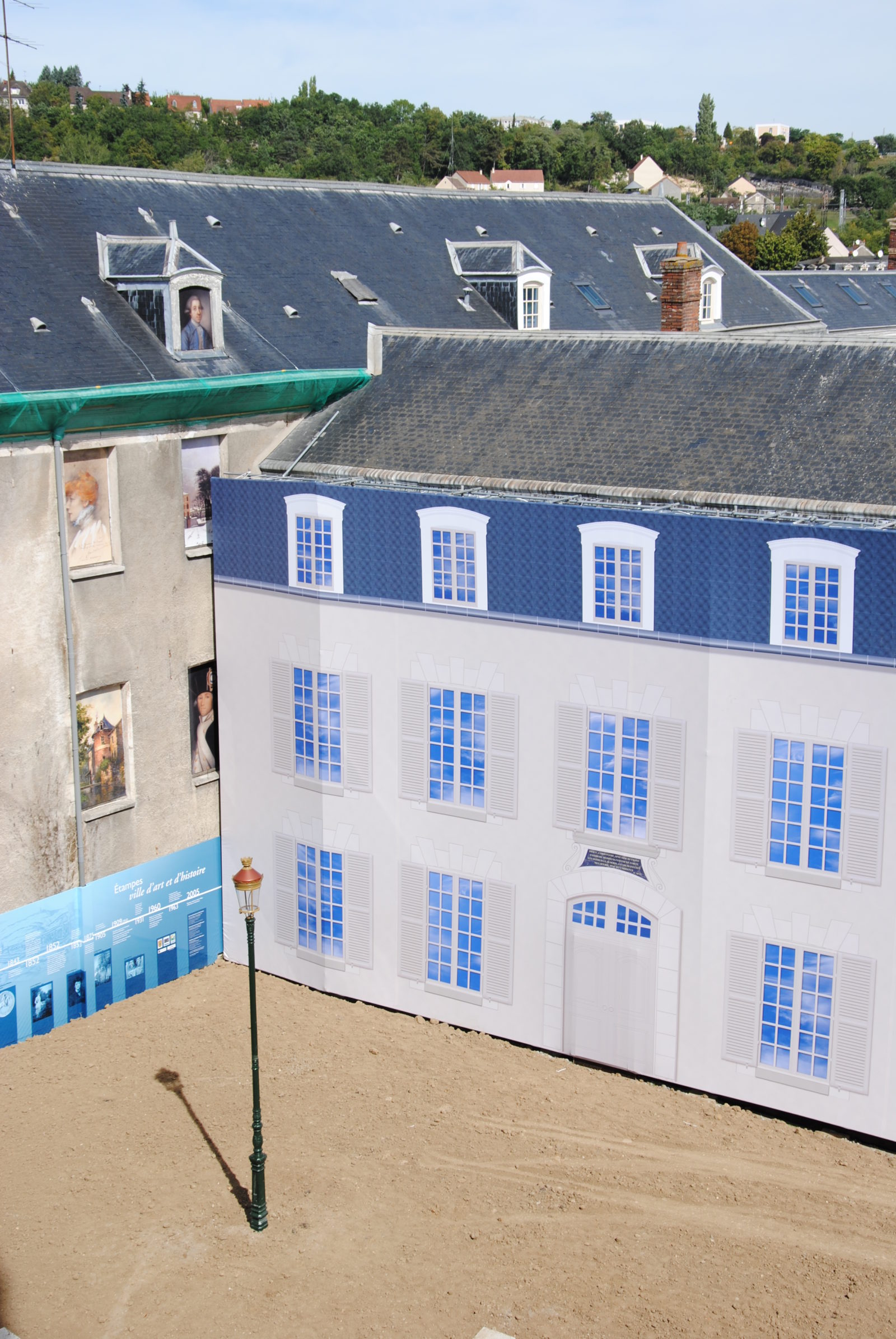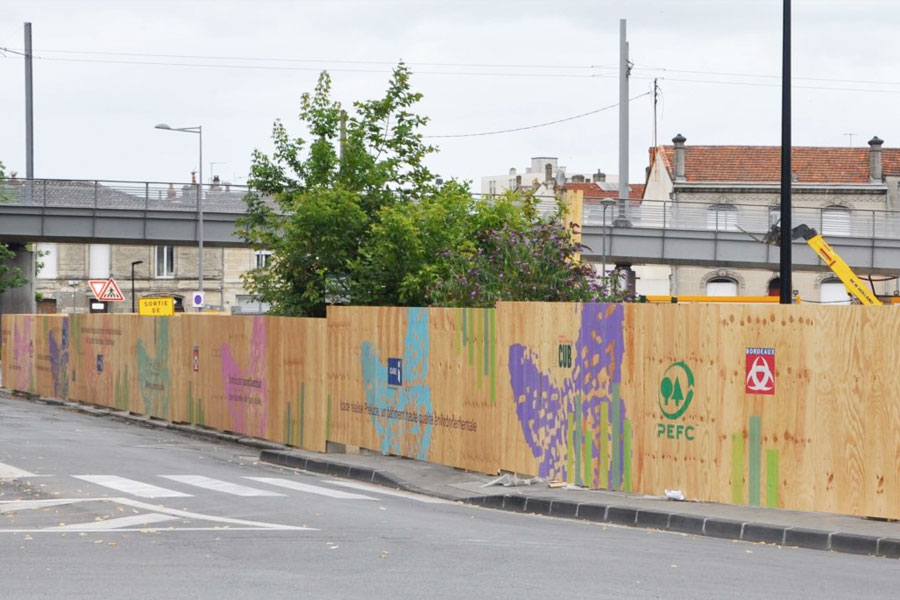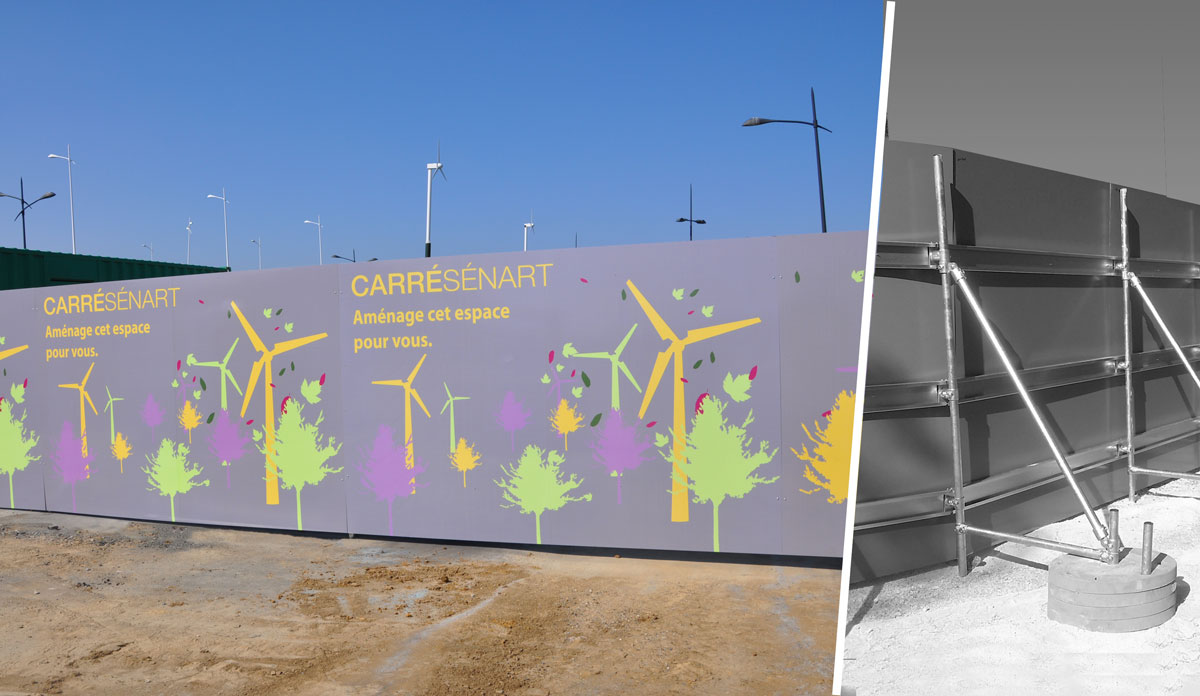
There are several types of wooden hoardings, depending on whether they are for outdoor or indoor use. Each wooden panel forming the construction site hoarding serves as a support for construction communication. Among the different types of wooden hoardings, the project manager or contractor can choose from various panel types. The structure will vary based on the duration and use of the construction site.
The CTBX wood panel is suitable for outdoor use. Another type of wooden panel to consider is pine wood. Pine wood is an excellent option for creating an eco-friendly hoarding. To secure the hoardings in the ground, operators use wooden beams when the ground permits, or concrete anchoring when necessary. Wooden hoardings are also an interesting solution for outdoor communication.


